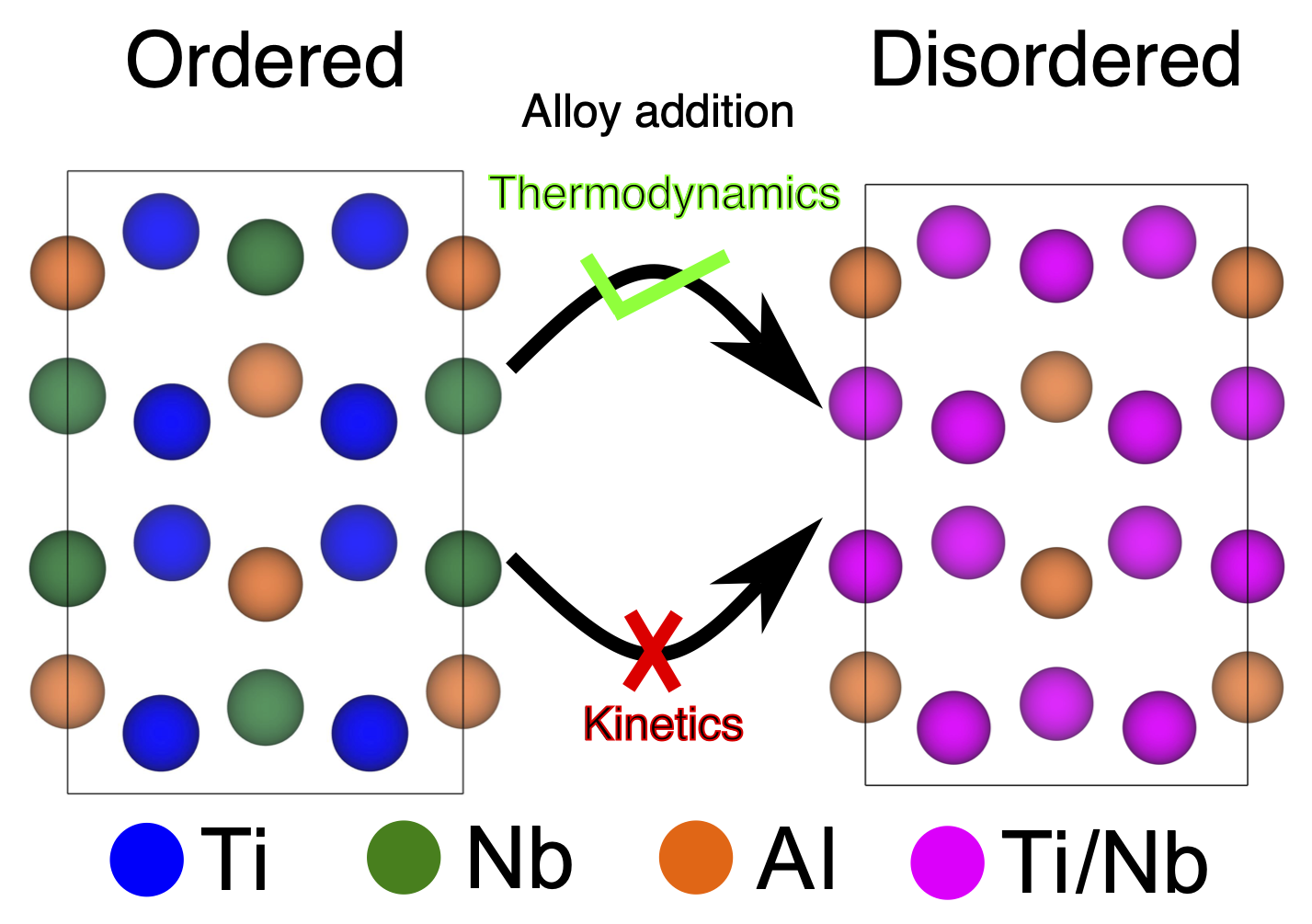Abstract
Alloys based on the orthorhombic-Ti2AlNb intermetallic phase (O-phase) are promising materials for high-temperature applications in jet engines, given that they can potentially replace Ni-based superalloys in some operating regions of the engines. However, the O-phase is prone to lattice disordering at high temperatures, primarily via anti-site defect formation across the Ti and Nb sites, which can reduce the material’s creep resistance and high-temperature tensile properties, necessitating the need to identify strategies to mitigate the disorder. Here, we focus on identifying suitable alloying additions to suppress the disordering of the O-phase using density functional theory and nudged elastic band calculations. Specifically, we consider six different alloying additions, namely, V, Cr, Fe, Mo, Ta, and W, and examine their role in the thermodynamics of anti-site formation and the kinetics of atomic diffusion. Upon verifying the ground state structure and formation energy of Ti2AlNb, we observe the proclivity of all alloying elements (except V) to occupy the Nb site in the O-phase structure. Subsequently, we find that none of the alloying additions can effectively suppress anti-site formation in Ti2AlNb, highlighting the unfavourable thermodynamics. However, we find that Mo and W additions to Ti2AlNb can kinetically suppress the disorder by reducing the diffusivities of Ti and Nb, by ≈4× and 8× compared to the pristine O-phase, respectively, at an operating temperature of 823 K. Thus, Mo and W additions represent a promising strategy to improve the creep resistance of Ti2AlNb-based alloys.
